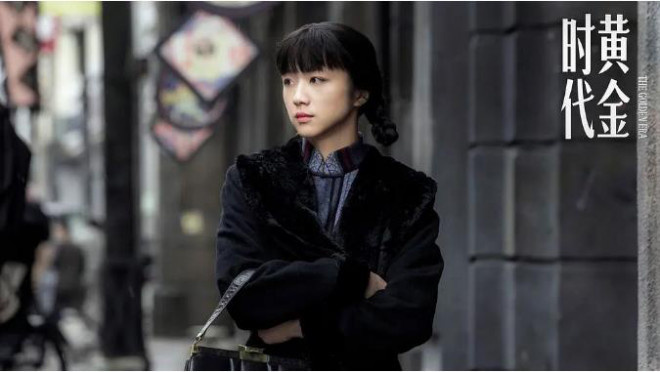Revelation of Xu Anhua’s Movies "Going North": Exploration on the Dissemination of Domestic High-concept Movies
Original title: Revelation of Xu Anhua’s film "Going North" — — Exploration on the dissemination of domestic high-concept films

Hong Kong director Xu Anhua won the Lifetime Achievement Award at the 77th Venice Film Festival. Recently, her new film has released a lot of publicity materials. Not only the actors are all-stars, but also the technical teams such as screenwriter, photographer, editor, art and sound are the top configurations in the film industry. The media drainage has earned the audience’s expectations. Based on Zhang Ailing’s novel of the same name, the film is ostensibly a drunken love story. In fact, through the social scenes of the upper class in Hong Kong during the Republic of China, it depicts the speculative themes such as emotion, desire and willingness, and shows the rich and complex cultural connotation by peeping into the geo-historical relationship between the two cities of Shanghai and Hong Kong and the humanistic features of Hong Kong.
Director Xu Anhua is a representative of the new wave of Hong Kong films. Looking at his creative process, we can find that the extreme genre aesthetics and deep humanistic care are the two most prominent labels of his works, which are not only the secret of Hong Kong films to convey "Hong Kong flavor", but also the development form of film aesthetics that China film industry expects to achieve at present, and the creative paradigm of new mainstream films is based on this. From the perspective of industrial thinking, the goal of film creation is to realize the function of economic value and cultural discourse construction through communication. Therefore, how to effectively distinguish films and realize multi-focus communication has always been one of the core propositions in the field of film communication in China.
Before the industrialization reform, it was customary in China to make morphological differences according to the dichotomy of commercial films, art films and main melody films. With the reform of China’s film industrialization and the collective development of Hong Kong directors going northward, the aesthetic concept and production mode of genre films are in line with the mainland film industry through co-production, and gradually become a new force in the film industry. At present, China’s film industrialization process has made remarkable achievements, and new changes have taken place in the fields of film aesthetics and film communication. Trigonometry or simple commercial typology can no longer properly summarize the film differences, so new ways of differentiation and communication paths are needed to supplement them.
Taking the three representative films of Xu Anhua’s "Going North" as an example, it is difficult to generalize them into certain types or pure art films, and these films have typical commercial production and distribution modes. Although the postmodern life of my aunt is stylized in aesthetic expression, its narrative is far better than that of Hollywood genre films, and it has distinct author brand and feminist characteristics. "Golden Age" breaks the double time and space inside and outside the camera, which is more experimental than commercial, and even causes some viewers to understand obstacles; When is the Bright Moon? It has a typical theme value appeal, based on the communication of Ming Xing Kasi, but it does not use genre creation, but poetically shows the theme of war and the group images of heroes in the war. These films enrich the aesthetic forms of domestic films, have distinct national aesthetic characteristics, and also provide a new idea for the industrial creation of domestic films, that is, high-concept films.
The definition of "high concept" comes from American TV industry in 1980s, and has been widely used in film field. It can be simply understood as a work with simple form, effective narration, high return on investment and typical labeling selling points. Its core connotation is to emphasize the advantages of production, publicity and other industrial fields, and try to establish an effective communication path to realize the commercial value of movies, which is in line with the guiding opinions of China’s film industrialization development. For film creation, the significance of high-concept film dispels the inevitable connection between commercial orientation and genre aesthetics, which is a more mature industrial thinking. Works with any theme and expression can be put on the market and return on investment through the industrialization promotion process. The high-concept film replaces the communicator-oriented thinking with the communication effect-oriented thinking, which is more in line with the characteristics of media and users in the new media era.

High-concept film is an industrial concept rather than an aesthetic concept. Therefore, it can be applied to the industrialization promotion of film works indiscriminately, which complements the industry’s detailed classification according to the aesthetic form of films. In recent years, a large number of domestic films with distinctive literary and artistic features have adopted high-concept production and publicity methods, and actively participated in market competition: for example, The Forever directed by Bi Gan, Jia Zhangke and Wang Xiaoshuai. The artistic quality and author style of these films are difficult to be classified by genre or business, and only by combining them with high-concept production and distribution thinking can we achieve better market response in both word-of-mouth and box office.
In addition, this dissemination effect-based production and distribution method is also applicable to the industrialization of documentaries: successful cases include. On the other hand, the National Art Film Projection Alliance has many preferential policies for the distribution and projection of non-genre films, forming a benign support. On the one hand, its significance recognizes that in the process of film industrialization, focus aesthetics provides a broad sinking market for art films and encourages non-genre film creation; On the other hand, from the perspective of industry, ensure that non-genre films have sufficient market competition channels and stable living space.
Judging from the aesthetic development of domestic films, genre films are a rising star in the reform of film industrialization and occupy a considerable advantage in the box office war. However, it is obviously not enough to ensure the healthy and all-round development of the whole industry by relying on a single aesthetic feature. Author films, realistic works, experimental films, documentaries, etc. should gradually participate in the market competition. The exploration of the dissemination of high-concept movies provides a valuable reference for this.
Back to the new film "The First Furnace Incense", the various features of the film basically conform to the concept definition of high-concept movies. The novel text of this film adopts the creative technique of modern literature, but many of its language plots and characters are clearly branded with the classic novel A Dream of Red Mansions, and Xu Anhua is good at adapting it with postmodern fable color through film language. Compared with the director’s early works such as My Aunt’s Postmodern Life, the aesthetic form of The First Furnace Incense must be rich and diverse. The market’s acceptance of high-concept movies will usher in another useful test. (Author: Zhao Yi, Associate Professor of New Media Art College of Xi ‘an Engineering University, Master Supervisor)